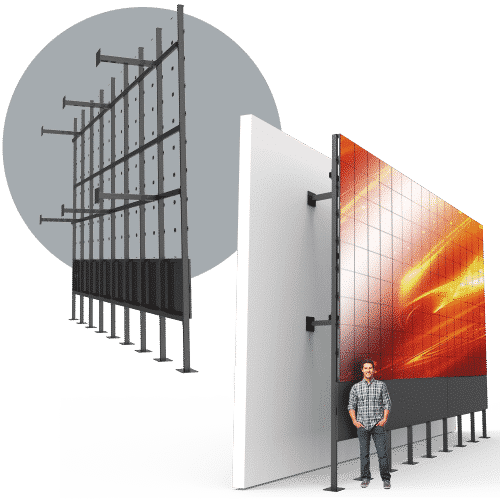Maximizing Efficiency and Reliability By Effective Thermal Dissipation in Digital Wall Systems
Wiki Article
Luminescent display screens remain progressively widely used within various fields, spanning advertising, media, and also residential decor. These units offer vivid, lively displays that can attract attention and elevate visual impressions. Still, one critical factor of ensuring their efficiency and longevity is effective thermal dissipation. When luminescent units operate, they produce heat. When this thermal load is not handled properly, it can cause lowered luminance, hue precision, and even a limited operational life for the panels. Consequently, understanding how to properly dissipate thermal output is vital for optimizing the performance of Light Emitting Diode wall screens.

Temperature control in Light Emitting Diode applications describes the approaches applied to handle and minimize the unwanted heat generated in the course of operation. One widely used method employs substances with superior heat transfer capability, for example aluminum or metal alloys. These materials can efficiently dissipate temperature out of the light-emitting parts, keeping the system temperature within a controlled threshold. In addition, the engineering of LED displays plays a crucial role in thermal control. Units that include heatsinks or cooling systems allow warm currents to dissipate while drawing in fresh currents, thereby aiding in thermal regulation.
A further important element in efficient heat management is appropriate mounting and placement of Light Emitting Diode modules. Ensuring that there is adequate room around the units enables enhanced airflow, which works to regulate them efficiently. It is also essential to prevent positioning lighting screens in confined spaces where thermal energy can become accumulated. As an alternative, they should be installed in locations with adequate air circulation to facilitate optimal temperature regulation. Specialists often recommend positioning luminescent units away from direct solar exposure or other temperature sources to reduce the risk of overheating.
Regular upkeep of check out here Light Emitting Diode wall panels is also essential for ensuring effective thermal management. Debris and residue can build up on the outer layer of the panels and inside their parts gradually. This collection can limit airflow and hinder the unit’s capability to cool effectively. Wiping the exteriors routinely and making sure that any inside mechanisms are without obstruction will assist maintain optimal efficiency standards. In addition, inspecting for any indicators of fatigue or defects can assist in mitigating excess heat complications before they become severe problems.
To conclude, proper temperature control is crucial for optimizing both the functionality and lifespan of luminescent modules. By employing metals discover here with high thermal conductivity, ensuring proper installation and arrangement, and carrying out consistent servicing, operators can greatly improve their light-emitting experience. Understanding these guidelines not only aids in maintaining the integrity of the visuals but also promotes energy savings and sustainability in lighting solutions. As technology continues to advance, prioritizing heat dissipation will stay an critical element of deploying LED wall panels to their full potential.